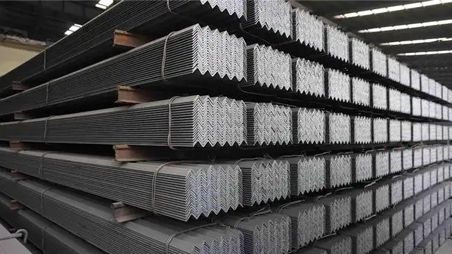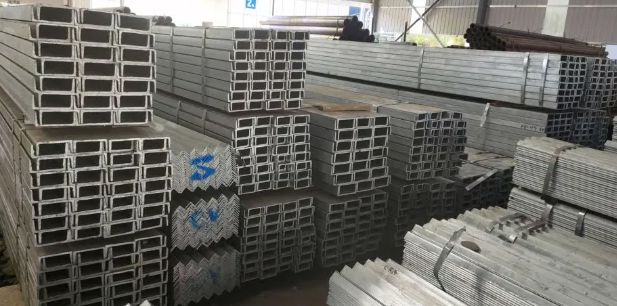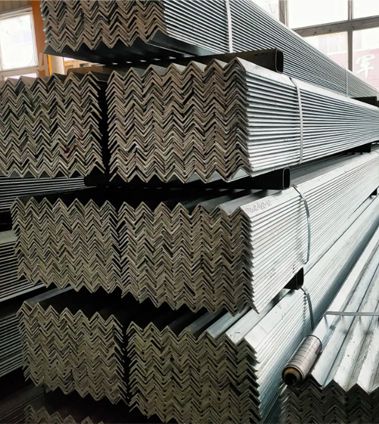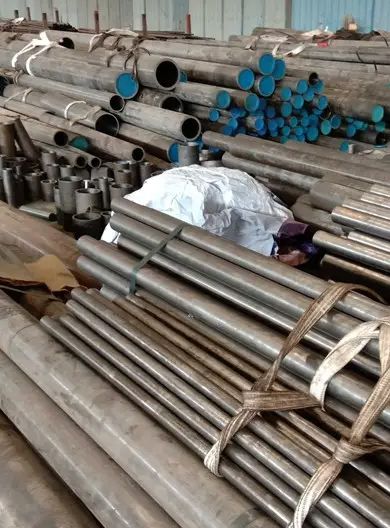
What material is the electrode made of? There are many types of welding rods. The more common ones on the market are silver welding rods, stainless steel welding rods, cast iron welding rods, carbon steel welding rods, aluminum welding rods, low alloy steel welding rods, cobalt-based welding rods, etc. Welding electrodes are divided into wear-resistant electrodes, universal electrodes and other categories. The electrode type has a lot to do with its usage and usefulness, so let's learn about the electrode type and use together!1. What material is the electrode made of?The electrode is to apply the coating (coating) evenly and centripetally on the welding core outside the metal welding core. The welding core is the metal core of the electrode. In order to ensure the quality and performance of the weld, there are strict regulations on the content of each metal element in the welding core, especially the content of harmful impurities (such as sulfur, phosphorus, etc.), which should be strictly controlled. The limit is better than that of the base metal. The electrode is composed of two parts: the welding core and the coating. Different types have different solder cores. Here are some common electrodes:1. Silver electrodeSilver electrode is a kind of electrode with silver or silver-based solid body, which has excellent process performance, low melting point, good wettability and ability to fill gaps, and has high strength, good plasticity, and electrical conductivity. It has excellent corrosion resistance and can be used to braze all black and non-ferrous metals except aluminum, magnesium and other low melting point metals. This product is widely used in refrigeration, lighting, hardware and electrical appliances, instrumentation, chemical industry, aerospace and other industrial manufacturing field.2. Stainless steel electrodeStainless steel electrode refers to a type of electrode coated with stainless steel as raw material. It can be divided into chrome stainless steel electrode and chrome nickel stainless steel electrode, which are widely used in chemical, fertilizer, petroleum, medical machinery manufacturing and other industries. In addition to meeting the general welding process performance and the mechanical properties of the welded joint, the stainless steel electrode must also ensure that the welded joint can meet certain corrosion resistance requirements.3. Cast iron electrodeCast iron electrode is an electrode used for cast iron, which is characterized by high strength and good plasticity. Suitable for gray cast iron and ductile iron, and can be machined. Cast iron is an iron-carbon alloy with a carbon content greater than 2%. There are more than 10 kinds of cast iron electrodes available in China, which can be selected according to different cast iron materials, different machining requirements and the importance of welding repair parts.Due to the high carbon content, uneven structure and low plasticity of cast iron, it is a material with poor weldability. In the welding process, defects such as white mouth, cracks and pores are easily generated. Therefore, cast iron welding repairs also require higher technical proficiency for welders. Cast iron welding repairs can be roughly divided into two types: preheating welding and cold welding.4. Carbon steel electrodeCarbon steel electrodes (the tensile strength of the deposited metal is less than or equal to 500MPa or 50kgf/mm2) are suitable for carbon steel and low-strength low-alloy steel welding.For low-hydrogen type and iron powder type electrodes, the electrode must be baked at 350°C or higher before welding, and it should be done as much as possible. cracks, deterioration of process performance, etc.). For cellulose-type electrodes, the baking temperature should be strictly followed. If the temperature is too high, the cellulose in the coating will be burned off and the inherent process performance of the electrode will be destroyed.2. Types and uses of welding rods1. SH.J422It is used for welding more important low carbon steel structures and low alloy steels with low strength grades such as Q235.Description: J422 is a carbon steel electrode with titanium calcium type coating. It has excellent welding process performance, stable arc, beautiful weld bead, small spatter, both AC and DC, and can be used for all-position welding.Uses: Used for welding important low carbon steel structures and low alloy steels with low strength grades, such as Q235.2. SH.J426For welding important low carbon steel and low alloy structures. Has good mechanical properties and crack resistance. It needs to be baked at 350°C xlh before use.Description: J426 is a carbon steel electrode with low hydrogen potassium type coating. Has good mechanical properties and crack resistance. AC and DC dual-use, can perform all-position welding.Application: Used for welding important low carbon and low alloy steel structures.3. SH.J427For welding important low carbon steel and low alloy structures. It has good plasticity, toughness and crack resistance. It needs to be baked at 350°C xlh before use.Description: J427 is a carbon steel electrode with low hydrogen sodium type coating. With DC reverse connection, all-position welding can be performed, and it has excellent plasticity, toughness and crack resistance.Application: Used for welding important low carbon steel and low alloy steel structures.4. SH.J506For welding of mild and medium carbon steels. Has good mechanical properties and crack resistance. It needs to be baked at 350°C xlh before use.Description: J506 is a carbon steel electrode with low hydrogen potassium type coating. Has good mechanical properties and crack resistance. AC and DC dual-use, can perform all-position welding.Application: Used for welding medium carbon steel and low carbon steel.5. SH.J507Can weld medium carbon steel and some low alloy steels. It adopts DC arc welding current reverse connection, which has good plasticity, toughness and crack resistance. It needs to be baked at 350°C xlh before use.Description: 507 is a carbon steel electrode with low hydrogen sodium type coating. With DC reverse connection, all-position welding can be performed. The weld metal has good plasticity, toughness and crack resistance.Application: It can weld medium carbon steel and some low alloy steel.5. A402 (E310-16)Description: A402 is a pure austenitic stainless steel electrode with titanium calcium type coating. The deposited metal has excellent oxidation resistance under the high temperature condition of 900℃-1000℃. AC and DC dual-use, with good operating performance.Uses: It is used for welding of the same type of heat-resistant stainless steel working under high temperature conditions, and can also be used for welding of chromium steels with high hardening (such as chromium, molybdenum, chromium, molybdenum, chromium 13, chromium 28, etc.) and dissimilar steels.

Butterfly valve, also known as flap valve, is a kind of regulating valve with simple structure. The meaning of butterfly valve model is the code of the type, connection and structure, transmission method and valve body material. Specifically, take D37A1X5-16ZB1 as an example to tell you how to look at the model of the butterfly valve. In addition, there are many types of butterfly valves, which can be classified according to structure, sealing surface material, sealing form, working pressure, working temperature and connection method. Next, I will introduce in detail what the butterfly valve model specifications mean and the types of butterfly valves. Let's take a look at the relevant knowledge!1. What is the meaning of butterfly valve model specifications?The meaning of the butterfly valve model specification is arranged and specified by the code of the type, the connection and structural form, the transmission method and the valve body material, such as: D37A1X5-16ZB1.1. D: butterfly valve (the first letter of die pinyin)2, 3: Turbine transmission (this supplement: there are 6 for pneumatic, 7 for hydraulic, 9 for electric)3, 7: Wafer connection (this supplement: there are 4 for flange, 6 for welding)4. A1: A-type midline form (another addition: there are 2 for double eccentricity, 3 for triple eccentricity, and LT type corresponding to A type)5. X5: nitrile rubber seal (this supplement: X3 represents ethylene propylene rubber, and F represents PTFE)6, 16: Pressure resistance 16 kg (this supplement: 6, 10, 25 kg pressure, etc.)7. Z: Butterfly valve body material gray cast iron (this supplement: Q stands for ductile iron, C stands for cast steel, and P stands for stainless steel)8. B1: valve plate material 304 stainless steel2. What are the types of butterfly valves1. Classification by structure(1) Sealed butterfly valve(2) Single eccentric sealing butterfly valve(3) Double eccentric sealing butterfly valve(4) Triple eccentric sealing butterfly valve2. Classification by sealing surface material(1) Soft sealing butterfly valve, the sealing pair is composed of non-metallic soft material to non-metallic soft material(2) Metal hard sealing butterfly valve, the sealing pair is composed of metal hard material to metal hard material3. Classification by sealing form(1) Forced sealing butterfly valve, the specific pressure of sealing is generated by the valve plate pressing the valve seat when the valve is closed, and the elasticity of the valve seat or valve plate(2) Additional torque sealing butterfly valve. The seal specific pressure is generated by the torque applied to the valve shaft(3) Pressurized sealing butterfly valve. The sealing specific pressure is generated by the charging of the elastic sealing element on the valve seat or valve plate(4) Automatic sealing butterfly valve, the sealing specific pressure is automatically generated by the medium pressure4. Classification by work pressure(1) Vacuum butterfly valve, butterfly valve whose working pressure is lower than standard reactor atmospheric calendar(2) Low pressure butterfly valve, butterfly valve with nominal pressure PN < 1.6MPa(3) Medium pressure butterfly valve, butterfly valve with nominal pressure PN of 2.5--6.4MPa(4) High-pressure butterfly valve, the nominal pressure PN is 10.0--80.0MPa butterfly valve(5) Ultra-high pressure butterfly valve, butterfly valve with nominal pressure PN>100MPa5. Classification by working temperature(1) High temperature butterfly valve, butterfly valve with t>450C(2) Medium temperature butterfly valve, butterfly valve with 120C<t<450C(3) Normal temperature butterfly valve, a butterfly valve of 40C<t<120C(4) Low temperature butterfly valve, a 100 < t < a 40C butterfly valve(5) Ultra-low temperature butterfly valve, t<-100C butterfly valve6. Classification by connection method(1) Wafer type butterfly valve(2) Flanged butterfly valve(3) Lug butterfly valve(4) Welded butterfly valve

Polyurethane thermal insulation pipe is a direct buried prefabricated thermal insulation pipe with good thermal insulation performance, safety and reliability, and low engineering cost. It effectively solves the problems of heat preservation, sliding lubrication and waterproofing of exposed pipe ends for prefabricated thermal insulation pipe fittings for high temperature heat transfer at 130℃-600℃ in urban central heating. Prefabricated directly buried thermal insulation pipes/prefabricated thermal insulation pipe fittings not only have the technical and practical performance that traditional trenches and overhead laying pipelines are incomparable to, but also have significant social and economic benefits, and are also a powerful measure for heating and energy saving. The prefabricated thermal insulation pipe fittings adopt directly buried heating pipeline technology, which indicates that the development of heating pipeline technology in China has entered a new starting point.Application of prefabricated direct buried insulation pipe/prefabricated insulation pipe fittings:Prefabricated thermal insulation pipe fittings are widely used in liquid and gas transportation pipeline network, chemical pipeline thermal insulation engineering, petroleum, chemical industry, central heating network, central air conditioning ventilation pipeline, municipal engineering, etc.Features of prefabricated direct buried insulation pipe:The prefabricated thermal insulation pipe fitting is composed of a steel pipe, a glass fiber reinforced plastic inner sheath, and a glass fiber reinforced plastic outer shell, and is characterized in that it also includes a high temperature resistant thermal insulation layer, a lubricating layer, and an elastic seal. The prefabricated thermal insulation pipe fitting of the utility model effectively solves the problems of heat preservation, sliding lubrication and waterproofing of exposed pipe ends for prefabricated directly buried thermal insulation pipes/prefabricated thermal insulation pipe fittings for high temperature heat transfer at 130°C-600°C in urban central heating.The polyurethane insulation pipe is divided into three layers from the inside to the outside: the working steel pipe layer is generally selected according to the design and customer requirements. (GB3092-93). After the surface of the steel pipe is treated by shot blasting and rust removal, the rust removal grade of the steel pipe can reach Sa2 level in the GB8923-1988 standard, and the surface roughness can reach R=12.5 microns in the GB6060.5-88 standard. The second layer: Polyurethane insulation layer It is formed by injecting rigid polyurethane foam stock solution at one time into the cavity formed between the steel pipe and the outer sheath with a high-pressure foaming machine. The so-called "tube-in-tube foaming process". Its functions are firstly waterproof, secondly heat preservation, and thirdly support the self-weight of the heat network. When the temperature of the conveying medium is: -50℃-120℃, the rigid polyurethane foam is selected as the thermal insulation layer. The third layer: high-density polyethylene protective layer is prefabricated into a black (color) plastic pipe with a certain wall thickness, its function is to protect the polyurethane insulation layer from mechanical hard objects damage, and the second is to prevent corrosion and waterproof.

Insulation materials are used in our daily industrial equipment and pipelines. Today, Xiaobian will introduce insulation materials to you. The thermal conductivity of thermal insulation materials is generally less than or equal to 0.2. All materials are planned into thermal insulation materials. In the usual construction industry and industrial industries, good thermal insulation materials are often needed. These thermal insulation materials can often play a very good role. Effect. When selecting thermal insulation materials, some specific indicators such as thermal conductivity, combustion performance, water absorption performance and material strength of the material should be considered. There are many types of thermal insulation materials, and the following small series will introduce their advantages to you one by one.1. Rock wool pipeRock wool pipes are mostly used for thermal insulation of boilers or equipment pipes in petrochemical, metallurgical, shipbuilding and textile industries, and are sometimes widely used in partition walls in the construction industry. Keep warm. However, the insulation of pipelines in the power industry, petrochemical industry, light industry, etc. is used for thermal insulation and thermal insulation measures of various pipelines, especially for pipelines with small pipeline openings, which can be quickly implemented. Waterproof rock wool pipes It has special properties such as moisture resistance, water repellency and temperature discharge, suitable for use in rainy environments, and it has water repellency.2. Glass woolGlass wool has the characteristics of good formability, low bulk density and low thermal conductivity. Glass wool has extremely high corrosion resistance and good chemical properties in chemically corrosive environments. The adaptability of glass wool is for the insulation of air conditioners, the insulation of exhaust pipes, the insulation of boilers and the insulation of steam pipes.3. PolyurethanePolyurethane, which is mostly used in the production of cold storage, refrigerated trucks or fresh-keeping boxes, can also be used as an insulating layer for color steel sandwich panels. Polyurethane is sometimes used in petrochemical tanks. Polyurethane also has the function of heat preservation and cold preservation, and has been applied to petrochemical and metallurgical fields, especially in the outer layer protection of various buried composite directly buried pipelines to the greatest extent.4. Composite silicateComposite silicate has the advantages of low thermal conductivity, excellent thermal insulation performance, and low bulk density in thermal insulation materials at high temperature. Compared with other pipeline thermal insulation materials, composite silicate The construction method is more convenient, there is no stimulation and pollution to the employees who use it, and it will not cause harm to the human body. It can be cut and rolled at will, and its transportation is relatively safe and reliable, with low loss. Composite silicates are widely used in the petrochemical industry, electrical industry, metallurgical industry and some national defense undertakings in my country to heat and insulate various tanks and pipelines and other equipment. Formula silicates are considered by us to have the ideal material for saving energy.5. Ultra-fine glass surfaceLight weight, low thermal conductivity, good thermal insulation and sound absorption, corrosion resistance, heat resistance, frost resistance, shock resistance, not afraid of insects, not stinging the skin, and has good chemical stability, and convenient construction, is a light High-quality, efficient, durable and economical industrial thermal insulation materials.6. Rigid polyurethane foamRigid polyurethane foam is a new type of polymer composite material, which has the characteristics of light weight, high specific strength, low thermal conductivity, and good thermal insulation performance. It is widely used in shipbuilding, construction, petrochemical, chemical process pipelines, equipment and storage tanks for thermal insulation and cold insulation, military scientific research, indoor air conditioning, etc. It is a widely used pipeline thermal insulation material.7. Rubber spongeThe thermal conductivity of rubber and plastic pipe insulation materials is low, and it has a fine independent bubble structure, no air convection, a completely closed-cell structure, and the thermal insulation effect is lasting and good, and the material is completely isolated from water vapor. In the environment above 89 degrees Celsius and below minus 60 degrees Celsius, there will be no physical changes, and it is suitable for cold preservation of various refrigeration engineering projects. The rubber-plastic pipe insulation material does not absorb water, does not condense, and has a long service life. After SGS testing, the actual measured value is far lower than the EU standard value for non-toxic substances. It is healthy and safe to use; the appearance is soft and beautiful, easy to bend, and easy to construct. Fast, and no other auxiliary materials are required. Its good temperature and weather resistance makes it very suitable for thermal insulation of hot water pipes of solar water heaters; thermal insulation of automobile air-conditioning pipes and steam pipes; it can also be widely used in shock absorption and sound absorption and noise reduction.8. Rock wool insulation feltRock wool insulation felt is made of basalt and other natural ores as main raw materials, which are melted at high temperature into fibers and processed by adding appropriate amount of adhesive. It is suitable for the insulation of storage tanks and large-diameter pipes. Rock wool insulation felt has excellent thermal insulation performance, convenient construction and installation, remarkable energy saving effect, and high cost performance. In short, rock wool insulation felt is a high-quality thermal insulation material with low thermal conductivity.These are the common pipe insulation materials in our industry. Each has its own characteristics and advantages. Analyze the environment where you need to heat the pipe and find out the suitable pipe insulation material.

Hotline



Back to top